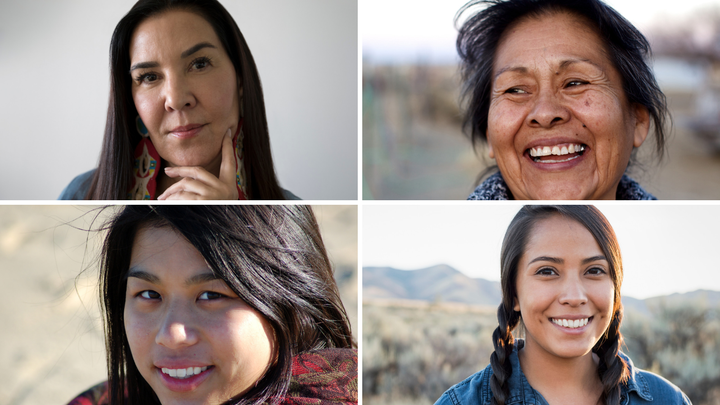
On Equal Pay Day this April ― representing the day American women’s pay finally catches up to what men earned the previous year ― I joined women across the U.S. in vocal protest for fair wages. I also knew, however, that I’d need to save some of my energy for Sept. 27, 2018: Native Women Equal Pay Day.
Native American women’s wages catch up to the average white man’s from the previous year only after a full nine months of additional work. And as a member of Oceti Sakowin (Great Sioux Nation) and throughout my professional career, I’ve witnessed how greatly gender pay disparities hurt Indigenous women.
The Equal Pay Act, signed into law in 1963, was meant to end the gender pay gap by making it illegal for employers to discriminate against employees by paying them less based only on their gender. More than 50 years have passed, but wage disparities between men and women in the U.S. persist; it’s predicted that America’s gender wage gap won’t close until 2059 if its trajectory remains on the current course. Today, American women on average are paid 80 cents for every dollar men earn.
Women account for an alarming two-thirds of America’s minimum wage workers, and we’re more than twice as likely to work for poverty-level wages (even as we’re more often fully responsible for our children’s care). And if these statistics weren’t already stark enough, the gender pay gap widens considerably when race is factored in: Black women are paid just 63 cents to the white man’s dollar and must work until Aug. 7 of the next year to reach white men’s pay.
For Native women ― descendants of America’s Indigenous populations that lived here for thousands of years before Columbus washed ashore ― the numbers are worse yet. We are paid on average a mere 57 percent of what white men make. (Only Latina women are paid worse on average.) As a result, we lose about $24,007 each year; if we want to someday catch up to white men, we’ll have to work until we’re 90 years old.
“I’ve witnessed how greatly gender pay disparities hurt Indigenous women.”
And if you think this wage gap narrows as Native women complete additional education, you’d sadly be mistaken. Native women experience pay disparities at every level of education, and it actually worsens the more education a Native woman achieves. A doctorate doesn’t do Native women much good in terms of pay; we see the largest wage gap, earning an average of just 55 cents for every dollar paid to white men at the same education level.
I speak from experience. I was born and raised in poverty on the reservation and went on to earn my bachelor’s and master’s degrees in biology and a juris doctorate.
Then, while serving as a tribal attorney and judge, I experienced the worst gender wage gap thus far in my career. On more than one occasion, I accepted positions knowing I was going to be paid thousands of dollars less than the men who previously held the same post and performed the same duties, despite the fact I was more qualified for the job.
Could I have worked elsewhere? Yes. But I took the job (and the relatively low pay) because I wanted to work on the reservation and serve my people. It’s not lost on me that those in power may very well have taken advantage of my desire to make a difference (and possibly did the same to women before me).
The reasons for such a wide gender pay gap in the Native community are twofold. Today, Native women often find themselves in rural, isolated locales where unemployment is high to begin with. Why? Because our lands and resources were stolen from us hundreds of years ago and those of us who survived the genocide, the starvation, the disease and the massacres that wiped most of us out were removed from our homes and placed on reservations. There, many Native women still live (though Native women who live in urban areas experience wage disparities as well).
Why stay? Because forging strong kinship bonds is a big part of Native identity. Native women often stay on the reservation or return to the reservation after earning an education to care for extended family and to improve conditions there. They have a desire to serve. Other Native women stay on the reservation because of a lack of opportunity. Either way, it’s home.
“The scourge of colonization infected our communities with patriarchy.”
Furthermore, when Native populations were forced to assimilate into white society starting in the early 1800s, our cultures, languages and spiritual beliefs became illegal. Native children were taken from their tribal communities and placed in boarding schools ― where their hair was shorn and they were beaten for speaking their Native language ― adopted away or put in foster care with white parents. Ancestral teachings about gender and equality were cast aside, including those about the importance of tribal matriarchs.
And thus the scourge of colonization infected our communities with patriarchy. Visit Native communities today, and you’ll quickly discover that while it’s women who are in the trenches doing the important work, men hold our most visible leadership positions. Native women don’t just birth mighty red nations; we are their very backbone.
Native people account for less than 2 percent of the U.S. population, and many Indigenous communities today talk of decolonization ― reclaiming our Native heritage, culture, language and identity. However, decolonization cannot occur until the role of women in Native society is restored, and ensuring that Native women receive equal pay for their equal work is vital to such restoration.
We all can and must do our part to demand equality for this country’s Native women ― within our own communities, at our places of work and at the polls. Show your support by using #NativeWomensEqualPay on Sept. 27 at 2 p.m. Eastern time. Because Native women deserve ― and demand ― more.
Ruth H. Hopkins is a Dakota/Lakota Sioux writer, a co-founder of Last Real Indians and an award-winning former journalist for Indian Country Today. Follow her on Twitter @ruthhhopkins.
